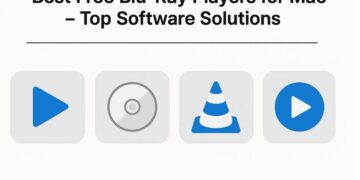Managing procurement can be a challenge for any business—especially when dealing with manual paperwork, approval delays, and missing purchase orders. From requesting items to tracking deliveries, the process involves many steps, departments, and documents. Without the right system in place, things can easily slip through the cracks.
That’s where digital tools come in. A powerful purchase requisition tool simplifies the entire process by automating how employees request goods or services. At the same time, tracking open purchase orders helps you stay updated on pending orders, deliveries, and supplier commitments. When combined, these tools can transform your procurement process into a streamlined, error-free workflow.
Why Manual Procurement Processes Are Problematic
In many businesses, procurement starts with a manual request—often a printed form or an email. This approach may seem manageable at first but quickly becomes confusing as your business grows.
Here are some common challenges:
- Slow approvals: Paper-based requisitions require physical signatures or email chains, causing delays.
- Missing documentation: Files may get misplaced, misfiled, or lost entirely.
- Lack of visibility: It’s hard to know who requested what, when, and why.
- Duplicate orders: Without a centralized view, you risk placing the same order twice.
- Budget leaks: Unapproved or off-contract purchases may slip through.
These issues not only reduce productivity but also cost money and frustrate teams. That’s why companies are moving away from manual procurement and embracing digital workflows.
How a Purchase Requisition Tool Simplifies Procurement
A purchase requisition tool digitizes the first step in procurement—raising a request. Instead of sending emails or filling out forms manually, employees can use an online interface to:
- Select items or services they need
- Fill in quantity, cost, supplier, and purpose
- Submit the request to the right approver automatically
The system takes care of routing the request to the appropriate manager, sending reminders, and keeping a record of every step. This ensures speed, accountability, and compliance.
Benefits of using a digital requisition tool:
- Faster approvals: Automatic routing shortens the time between request and approval.
- Clear audit trails: Every action is logged, making it easy to track who did what.
- Policy enforcement: Set rules to ensure purchases follow company policies.
- Mobile access: Approvals can happen anytime, from anywhere.
This kind of automation helps procurement teams focus on value-added tasks instead of chasing paperwork.
Understanding and Tracking Open Purchase Orders
After a purchase request is approved and turned into a purchase order (PO), the real tracking begins. An open purchase order refers to any order that has been placed with a supplier but is not yet fulfilled or closed. This could mean the goods haven’t arrived yet, or the invoice hasn’t been paid.
Managing open purchase orders is crucial to:
- Avoid payment delays
- Monitor supplier performance
- Ensure goods/services are delivered on time
- Plan inventory and budget accurately
A digital system for managing open purchase orders gives you a clear picture of all pending transactions in real time. You’ll know what’s been ordered, when it’s expected, and whether any follow-up is needed.
Key Features to Look For
Whether you’re choosing a requisition tool or a PO tracker, make sure it includes these key features:
- Customizable Forms – Tailor forms based on department needs and types of purchases.
- Automated Workflows – Define approval paths to eliminate bottlenecks.
- Status Tracking – Know the exact status of each request or order at any time.
- Notifications & Reminders – Keep everyone in the loop without manual follow-ups.
- Role-Based Access – Limit access based on roles to maintain data security.
- Reports and Dashboards – Generate real-time insights for better planning and auditing.
A system with all these capabilities brings transparency, control, and efficiency to your procurement process.
Integrating Requisition and PO Management
When your purchase requisition tool and open purchase orders tracking system work together, procurement becomes seamless. Requests flow smoothly into POs, which are then monitored until fulfillment. Everything is tracked in one place—from the initial request to final delivery.
Here’s how the combined workflow looks:
- Employee raises a purchase request via the tool.
- Manager reviews and approves the request.
- Procurement generates a PO and sends it to the vendor.
- The system tracks the open PO status (shipped, delivered, invoiced).
- Once fulfilled, the PO is closed, and the transaction is recorded.
This end-to-end automation ensures that nothing falls through the cracks. It also reduces manual entry, saving time and reducing errors.
Industries That Benefit the Most
This type of procurement automation is useful across all industries but especially powerful in:
- Manufacturing – where timely procurement of raw materials is critical.
- Healthcare – where accurate tracking of medical supplies is a must.
- Education – where schools need budget control for multiple departments.
- Retail – where open POs affect inventory and customer demand.
No matter the industry, simplifying procurement leads to faster operations, cost control, and better decision-making.
Conclusion
Procurement doesn’t have to be complicated. By using a modern purchase requisition tool and tracking open purchase orders in real time, businesses can eliminate paperwork, speed up approvals, and gain full control over spending.
Instead of managing chaos through spreadsheets and emails, let automation do the heavy lifting. Whether you’re a small business or a large enterprise, digitizing your procurement process is a smart move that saves time, money, and frustration.
Ready to make your procurement process simple and efficient? Start with the right tools—and see the difference it makes.













